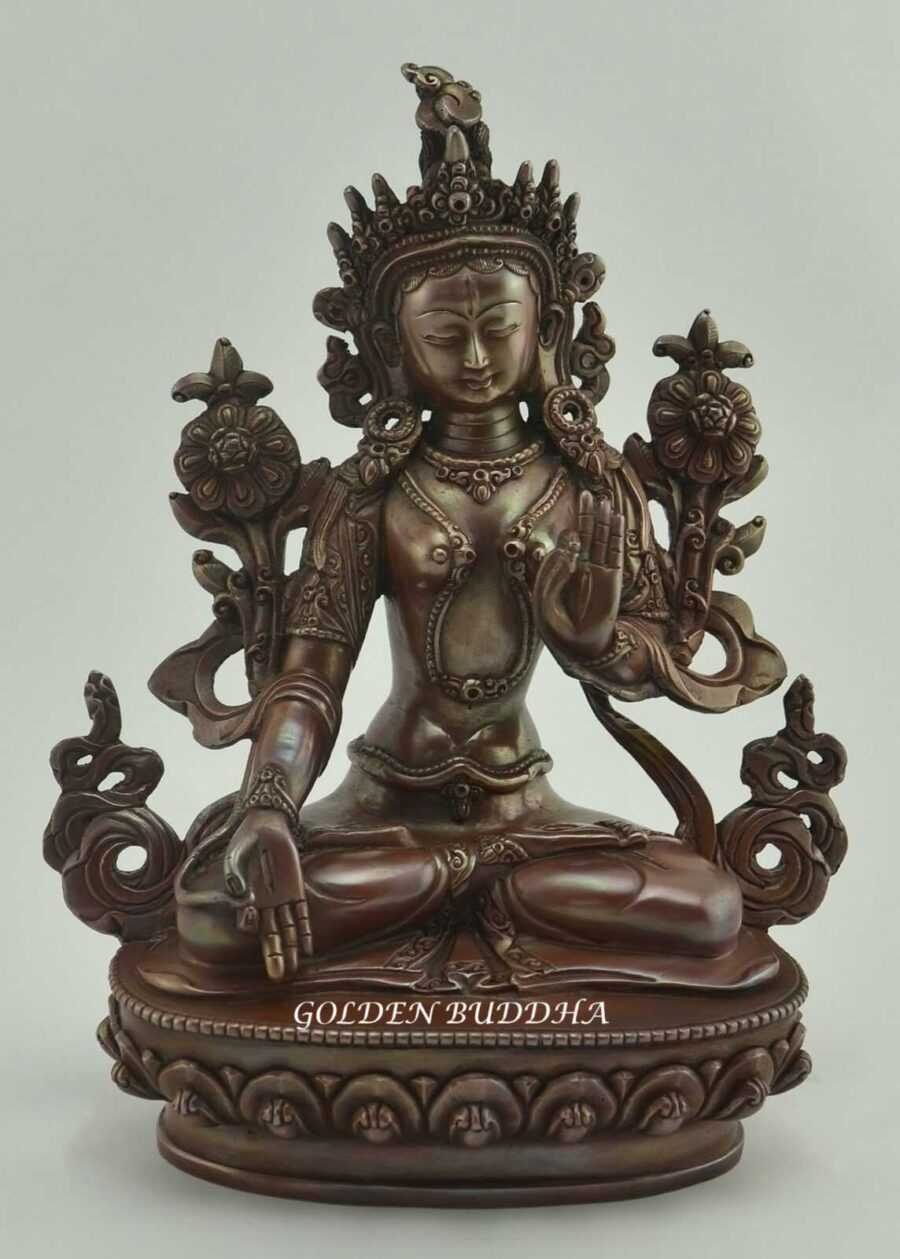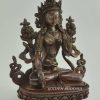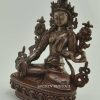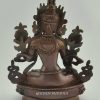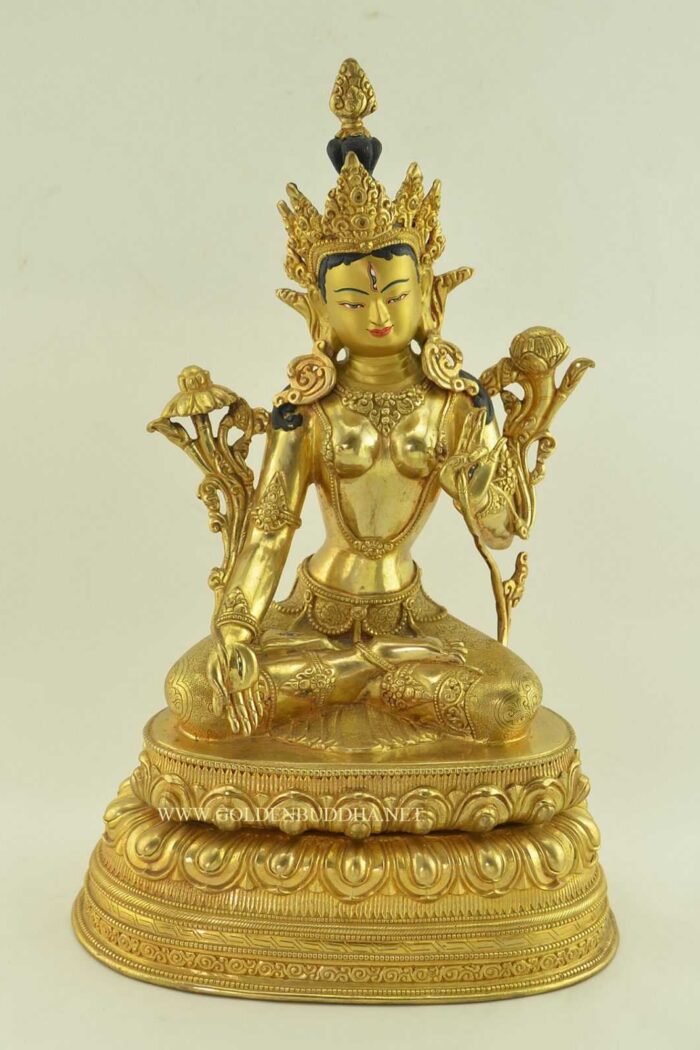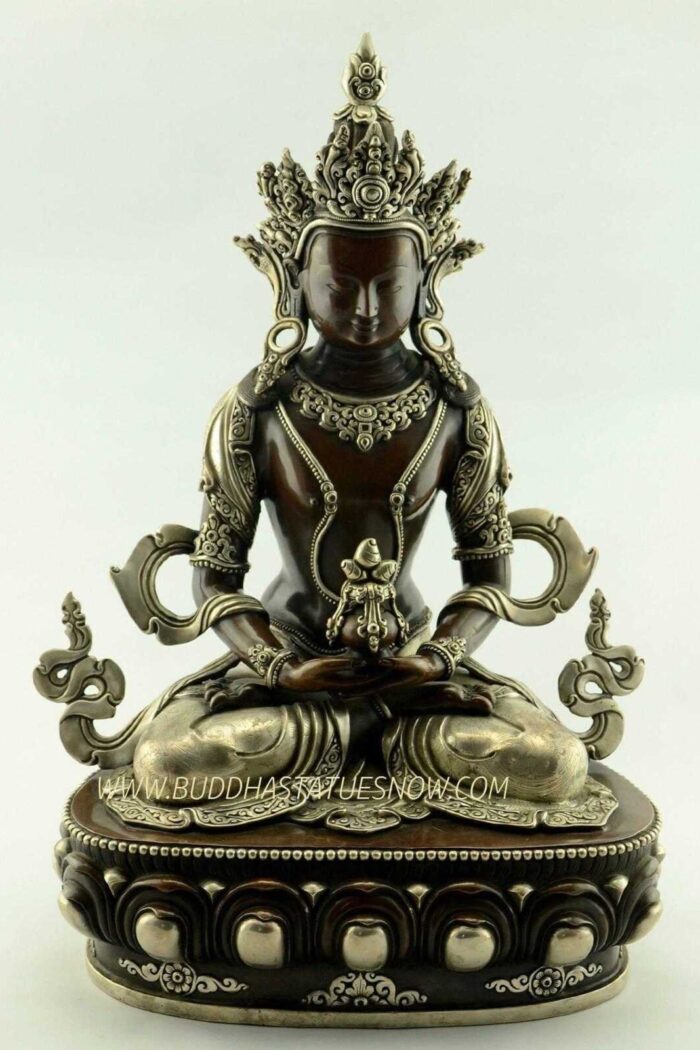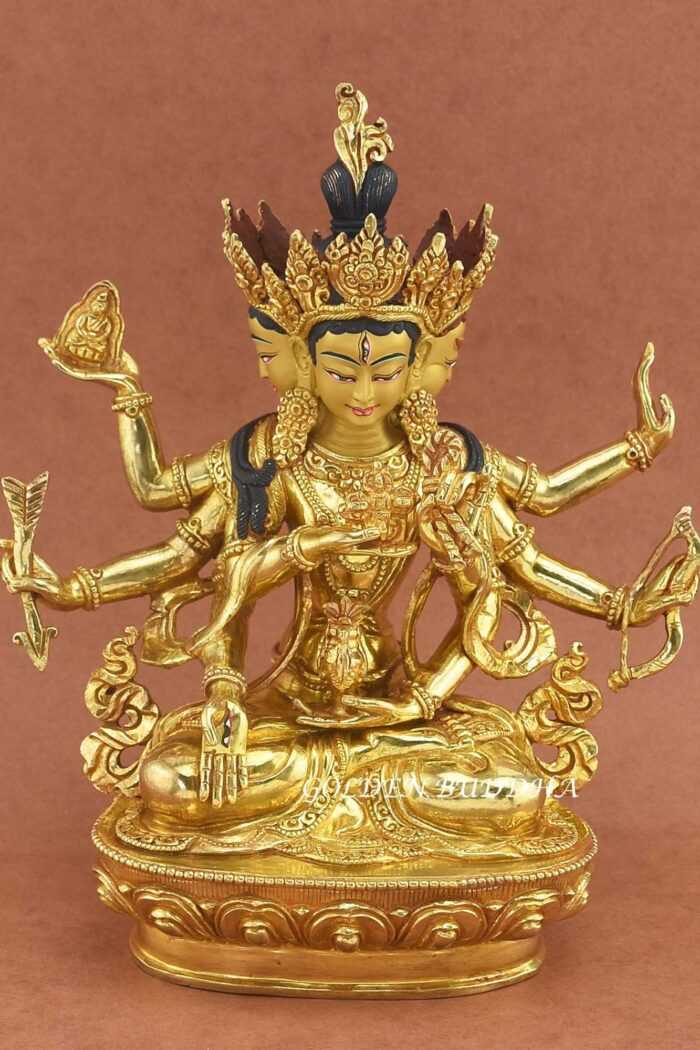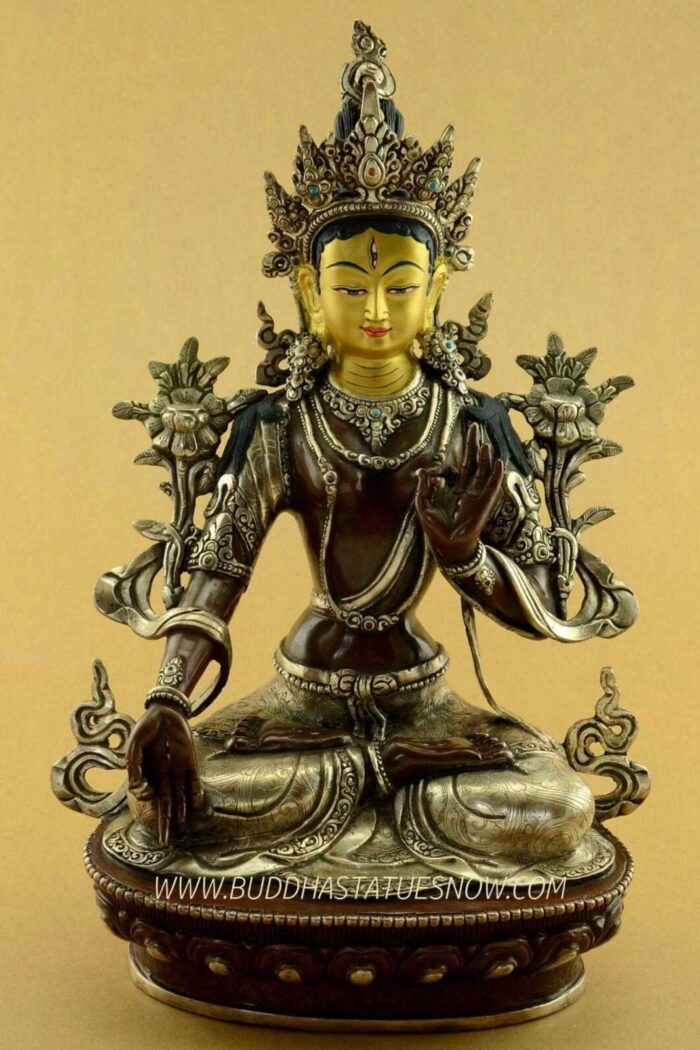The artisan gave the statue an antiquated finish with the crown and jewels of a bodhisattva. The crown and jewels can be embellished with turquoise and red stones upon request (at no extra cost). As a result, your Nepali Dolkar statue will be the center of attention in your home or meditation center.
Furthermore, the statue was created using the traditional lost wax sculpting method. The result is a finely detailed sculpture which will last for many lifetimes. For many centuries the Nepali artisans have perfected their craft, passing the knowledge down through the family castes. As a result, they are among the best sculptors in the world. Indeed, the Tibetan monasteries have long preferred the Nepali artisans as their source of Buddhist sculptures and ritual items.
Special Features Nepali Dolkar Statue
The Abhaya “protection” mudra is a classic Buddhist mudra that is recognized by practitioners from all the schools of Buddhism. This hand symbol for fearlessness is very important in Buddhist beliefs. Indeed, when devotees see the mudra, it inspires a sense of fortitude and confidence. The deity is depicting it with her left hand held chest high and palm facing forward.
Additionally, she is using the Varada or “gift giving” mudra with the right hand. Indeed, Dolkar/White Tara is certainly affiliated with generosity. Dolkar is known as the Cintachakra or “wish fulfilling wheel”. She is also one of the long life deities and she is empowered with the attributes of healing, compassion and serenity. Click here to learn more about the inspirations of Dolkar.


